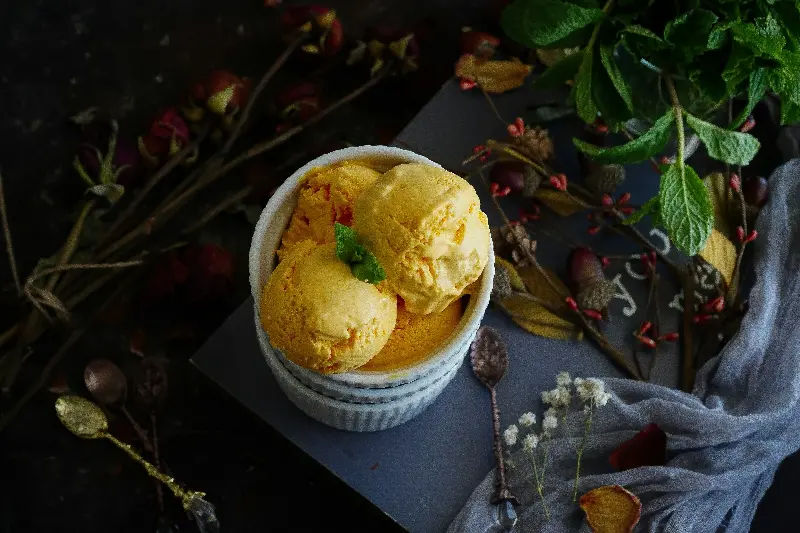From royal courts in ancient China to bustling city streets lined with artisanal gelato shops, the journey of ice cream is more than a simple tale of a frozen dessert. It’s a story of curiosity, creativity, and global connection. While today’s irresistible cones and sundaes spark joy for millions, few realize how far ice cream has traveled—across centuries and continents—to become the creamy treat we know and love.

Ancient Origins: More Than Just Chill
Long before refrigeration, several cultures had clever ways to enjoy chilly treats. The first whispers of what would become ice cream date back over 2,000 years. In ancient China, around 200 BC, royals indulged in a dish made by mixing rice and milk and then packing it in snow to freeze. This mixture was a privilege reserved for the rich, a symbol of status and luxury.
Meanwhile, the Persian Empire developed its own version called “faloodeh”—a creamy, noodle-like dessert made from vermicelli, rose water, and semi-frozen syrup. To maintain their supply of ice in scorching summers, Persians constructed spectacular ice houses known as “yakhchals,” showcasing early engineering combined with a yearning for something cold and sweet.
Ancient Greeks and Romans were not far behind. In Athens, snow was collected from Mount Olympus and flavored with honey and fruit, served in elaborate banquets. Roman Emperor Nero reportedly sent runners up the mountains for snow, which was then swiftly mixed with juices and fruits to please his elite guests.

The Dawn Of Dairy And European Indulgence
It wasn’t until the Middle Ages that dairy made its grand appearance in the evolution of ice cream. Arab traders, keen on enhancing flavors, blended milk with sugar, fruits, and even nut pastes, laying the foundation for the creamy consistency we crave today. Their version, “sharbat,” was a distant forerunner to sorbets and was cooled with ice from mountain tops.
Italy, with its penchant for culinary innovation, embraced these ideas and made them its own. By the Renaissance, Catherine de’ Medici introduced frozen desserts to the French royal court after marrying King Henry II. But the real revolution came with Sicilian chef Francesco Procopio dei Coltelli, who opened Paris’s famous Café Procope in the late 1600s, delighting the public with affordable “gelato.” Its success marked ice cream’s transformation from royal delicacy to shared pleasure.

Crossing The Atlantic: New World, New Flavors
Ice cream sailed to North America with European settlers in the 18th century. George Washington was said to have spent a small fortune on ice cream during a single summer, while Thomas Jefferson’s handwritten ice cream recipe is still preserved at the Library of Congress. Colonial ice cream was handmade with rock salt and ice in labor-intensive churns—a far cry from the shortcuts of today, but the reward was exquisite.
By the mid-19th century, ice cream’s fate changed forever with the invention of the hand-cranked ice cream freezer. Nancy Johnson, an American, patented this simple yet brilliant device in 1843, making the treat more accessible to households everywhere. Ice cream quickly became an American favorite, with street vendors serving “penny licks” and ice cream parlors springing up in every city.

Industrial Age To Modern Marvels
The 20th century ushered in innovations that took ice cream from luxury to everyday joy. Factories sprang up, and with the advent of mechanical refrigeration, mass production skyrocketed. During World War II, ice cream became a symbol of comfort—so much so that the US army famously shipped ice cream to the front lines to boost troop morale.
New flavors and experiences continued to flourish. The invention of the ice cream cone—believed to have made its big debut at the 1904 St. Louis World’s Fair—allowed lovers of the dessert to eat it on the go. The emergence of soft serve, credited to both Dairy Queen and Carvel in the 1930s and 1940s, brought a new kind of silky texture that quickly won over crowds.
In postwar years, creative entrepreneurs introduced novelties like the sundae, the banana split, and the ubiquitous ice cream sandwich. The freezer aisle exploded with options, from multi-layered rocket pops to decadent pints packed with swirls and mix-ins.

A Global Love Affair With An Endless Future
Today, ice cream is one of the world’s most beloved desserts, transcending age, culture, and background. International varieties add to its allure: think Japan’s mochi ice cream, Turkish stretchy dondurma, Indian kulfi full of cardamom, or Italy’s ever-evolving gelato.
Artisans and big brands alike experiment with flavors—everything from sea salt caramel and matcha to local specialties like sweet corn and goat cheese. The booming trend of plant-based and vegan ice cream ensures there’s something for everyone, no matter the dietary preference.
Yet, for all its innovations, the core of ice cream remains unchanged: a creamy, sweet, and frosty delight that brings people together, sparkles at celebrations, and delivers comfort on even the hottest or gloomiest days.
Ice cream’s story is a celebration of human ingenuity and simple pleasures—a journey from ancient emperors to modern families, proving that sometimes the coolest things are those that endure. So the next time you enjoy a scoop, remember you’re part of a centuries-old tradition as delightful and surprising as the treat itself.
